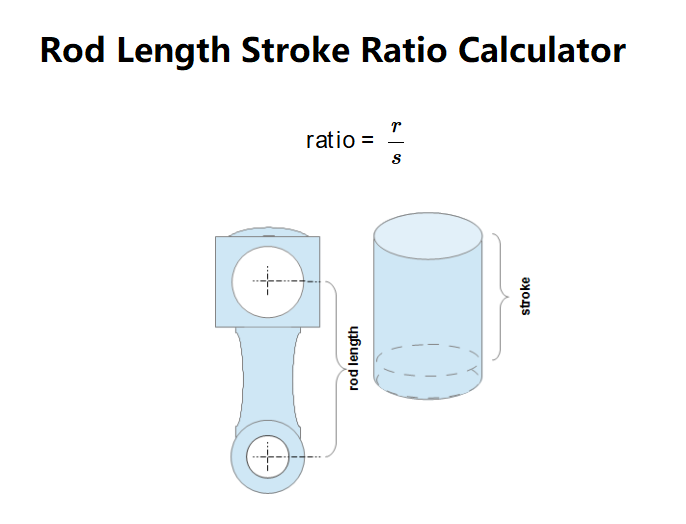 Home
Home
 Back
Back

Definition: This calculator computes the rod length to stroke ratio (\( \text{ratio} \)) of an engine based on the rod length (\( r \)) and stroke length (\( s \)).
Purpose: It is used in automotive and mechanical engineering to determine the ratio between the connecting rod length and the stroke of an engine, which influences engine dynamics, piston side loading, and overall performance.
The calculator uses the following relationship:
Where:
Explanation: Enter the rod length and stroke length in the chosen units, and the calculator computes the rod length to stroke ratio. Both inputs are converted to inches for the calculation, but since the result is a ratio, the units cancel out, making the ratio unitless. The result is displayed with 5 decimal places, using scientific notation if the value exceeds 100,000 or is less than 0.0001. For default inputs (\( r = 6 \, \text{in} \), \( s = 3 \, \text{in} \)), the calculated ratio is 2.00000.
Details: The rod length to stroke ratio is a key parameter in engine design. A higher ratio (longer rod relative to stroke) reduces piston side loading, improves engine smoothness, and allows for higher RPMs, while a lower ratio can increase torque but may lead to more wear on the cylinder walls. This calculation helps engineers optimize engine performance and durability.
How do I find the rod length to stroke ratio?
Measure the rod length (\( r \)) and stroke length (\( s \)) in the same units (e.g., inches). Compute the rod length to stroke ratio using the formula \( \text{ratio} = \frac{r}{s} \). The result is a unitless ratio.
What does the rod length to stroke ratio represent?
The rod length to stroke ratio (\( \text{ratio} \)) represents the ratio of the connecting rod length to the stroke length in an engine, indicating the geometric relationship that affects piston motion, side loading, and engine dynamics.
What is the formula for rod length to stroke ratio?
The formula for rod length to stroke ratio is \( \text{ratio} = \frac{r}{s} \), where \( r \) is the rod length, and \( s \) is the stroke length. The result is a unitless ratio.
Can I use different units for rod length and stroke?
Yes, the calculator supports multiple units for rod length and stroke (inches, centimeters, millimeters, meters, feet). All inputs are converted to inches for the calculation, but since the ratio is unitless, the units cancel out.
What happens if I enter zero for rod length or stroke?
Entering zero for rod length (\( r \)) or stroke (\( s \)) will result in the calculation not being performed, as both values must be greater than zero for a valid result.